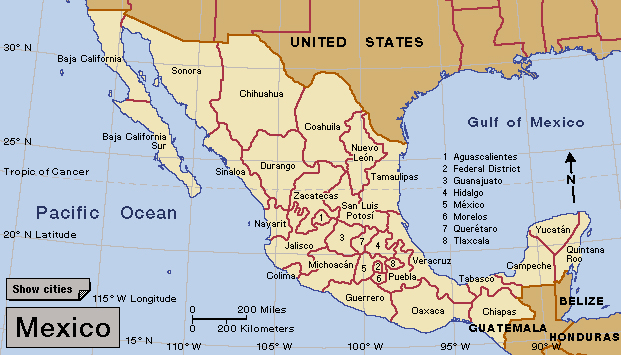Just before midnight on Thursday, September 7, a powerful earthquake caused death and destruction in southern Mexico. The 8.1-magnitude quake, the strongest in the region in decades, centered just off the Pacific coast states of Chiapas and Oaxaca. The temblor (another word for earthquake in both English and Spanish) toppled numerous structures and killed 96 people. Many people remain missing, however, and the death toll will almost certainly rise.
The earthquake’s epicenter was in the Gulf of Tehuantepec just off the southern Mexican coast. The coastal city of Juchitán de Zaragoza bore the brunt of the earthquake’s destruction. Hundreds of buildings were destroyed there, and many thousands were damaged, including Juchitán’s historic palacio municipal (city hall). In the early hours of Friday, September 8, emergency crews, federal police, and soldiers began pulling the dead and the living from the rubble of wrecked buildings as aftershocks rocked the area, causing further damage and panic. Since then, many damaged buildings have been cleared, but strong aftershocks continue and many structures remain too unstable to enter. More than 160 area municipalities have declared states of emergency, and many thousands of people still lack electric power, running water, and phone service.

The quake struck near the Middle America Trench, a zone in the eastern Pacific Ocean where one slab of Earth’s crust, the Cocos Plate, is sliding beneath the North American Plate—a geological process called subduction. The Middle America Trench is part of the so-called Ring of Fire, an area of high seismic and volcanic activity that encircles the Pacific Ocean. The United States Geological Survey (USGS) issued a red alert (highest threat level) after Thursday night’s quake, warning: “High casualties and extensive damage are probable and the disaster is likely widespread.” The alert was part of the USGS PAGER (Prompt Assessment of Global Earthquakes for Response) system that informs emergency responders, the media, and government and aid agencies of the scope of a potential disaster.
Last week’s earthquake was felt throughout southern Mexico and neighboring Guatemala. Some 500 miles (800 kilometers) away in Mexico City, the capital, structures swayed and earthquake alarms caused a mild panic. Many of the city’s residents carry vivid memories of the deadliest quake in Mexican history, an 8.0-magnitude temblor in 1985 that killed some 10,000 people in the city and nearby areas. About 400 buildings in Mexico City were destroyed in that disaster, and thousands of others suffered damage. Since then, Mexico has enacted tougher building codes and safety standards.
Untitled Document Can't view the linked articles? Subscribe to World Book Online

World Book Online delivers a progressive sequence of core databases supported by supplemental
tools, such as language translation, graphic organizers, and unique Webquests. Moving from
Early World of Learning to World Book Advanced, World Book Online aligns end-users with their
appropriate learning levels. Each stand-alone site provides additional features to support the
needs of users’ specific capabilities.
The World Book Difference
World Book combines cutting-edge technology with traditional editorial excellence to produce
authoritative, trustworthy, and unbiased content. The digital content is updated in real time and
carefully curated for each learning level. Accessible 24/7, the content is available on a variety of devices.
World Book Online combines 21st-century instructional techniques with timely information.
By breaking down complex topics and using easily understandable text, World Book Online helps to
build fluency and increase comprehension. Featuring single sign-on capability, these sites are paired
with highly visual content to engage even the most reluctant reader. Our collection of resources kindles
a lifelong learning experience for every user. This adherence to clarity, currency, and accuracy makes
World Book’s digital offerings an information hub for the classroom, library, and beyond.
|
Image 1: Emergency crews search the collapsed ruins of buildings in Juchitán de Zaragoza, Mexico, after a powerful earthquake struck the area late on Sept. 7, 2017. At left stand the surviving white arches of the city’s damaged palacio municipal (city hall). Credit: © Pedro Pardo, AFP/Getty Images
Image 2: Late on Sept. 7, 2017, a powerful earthquake caused damage and killed people in the southern Mexican states of Oaxaca, Chiapas, and Tabasco. Credit: WORLD BOOK map